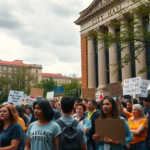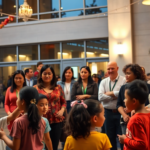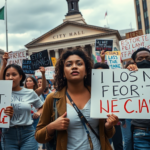Iron Age Iberian DNA Reveals Deep Roots and High Maternal Lineage Diversity
A groundbreaking genetic study has unveiled fascinating insights into the maternal ancestry of Iron Age Iberians in northeastern Spain, igniting community interest and enriching our understanding of ancient migrations and cultural exchanges. The findings, shared on Archaeology Magazine’s platform, highlight a deeply rooted population with significant maternal lineage diversity, disrupted only by long-distance female movements.
A Local Perspective on Ancient Iberians
Focusing on the Iron Age period, which spans from the 8th to the 3rd centuries BCE, the study conducted by researchers including Daniel R. Cuesta-Aguirre and Cristina Santos from the Universitat Autònoma de Barcelona, marks a critical development in understanding how ancient societies operated. These genetic revelations shed light on communities such as the Ilergetes, Cessetani, Indigetes, and Ausetani, who thrived along Iberia’s Mediterranean coast.
Northeast Spain’s well-preserved archaeological sites allowed researchers an unparalleled opportunity to sequence mitochondrial DNA from homemade archaeological excavation materials—namely, neonate remains. Holding significant bearings on current knowledge, this approach opens doors to redefine how historical narratives about Spain’s Iron Age are constructed.
Unveiling the Genetic Tapestry
Delving into mitochondrial DNA—received solely from the mother—researchers were able to trace maternal lineages with surprising clarity. New data incorporated 31 newly sampled newborn profiles with 41 previously published genetic profiles, crafting a thorough dataset that rewrites expectations about Iron Age life.
The findings indicate remarkable maternal lineage diversity among the tribes, with haplogroups H, J, K, HV0, and U dominating. Cristina Santos elaborated on these findings, saying, “As we piece together these historical enigmas, we see a storyline of evolution deeply connected with Bronze Age groups, suggesting a gradual transition rather than substantial population displacement.”
Patrilocal social practices, where women joined their husbands’ communities, typically resulted in local genetic continuities; however, short-distance female migration still managed to influence maternal lineage assortment. Despite intermittent genetic shifts, these events were not sufficient to create any significant genetic fissures among the tribes.
Tracing Long-Distance Influences
While the genetic landscape primarily showed local continuity, there were notable exceptions with deep implications. Certain maternal haplogroups revealed influences from far-reaching local spheres—such as North African and Near Eastern origins—suggesting linkages forged through ancient trade networks, possibly spanning seas or continents.
Attractive to trade and cultural exchange, connections between Iberia and distant cultures were also noted due to haplogroups like North African M1b discovered in Sant Miquel d’Olèrdola or Near Eastern N1a1a1a3. “These findings speak volumes about how ancient societies were far more cosmopolitan than previously assumed,” remarked local historian Jamie Delgado. “They engaged in complex networks of connectivity we’re only beginning to fully comprehend.”
El Camp de les Lloses was another critical archaeological witness, offering unique insight into Central European and Italian connections linked with tribes like the Ausetani. Part of these novel networks, however, may still be nascent conjectures warranting more research as elaborated by international experts engaged in undeniably collective archaeological efforts.
Implications for Modern Communities
Such enlightening finds extend beyond academic confines, delivering profound resonances for local communities tied to the Iberian Peninsula’s rich past. This study underscores a historical connection intrinsic to shaping present continental identities and cultural dialogue.
Alicia Gomez, an anthropologist at the University of Texas Rio Grande Valley, emphasizes how modern-day interactions reflect these ancient pathways by saying, “Just as those ancient Iberians incorporated and engaged diverse cultures, our current society is similarly enriched through multicultural interactions and exchanges. This study finely mirrors that continued tapestry.”
The Significance of Archaeological Inquiry
With archaeology magazines such as Archaeology Magazine playing an instrumental role in disseminating quality content to academic and broader audiences, platforms like it ensure a widespread accessibility to grossly important historical evidence. The commitment to preserving user privacy and ensuring ethical access highlighted by Archaeology Magazine is testament to the expanding community of archaeology enthusiasts globally.
Locally, museums and educational institutions stand ready to embrace these new findings through exhibitions or forums aimed at cultivating public curiosity and engagement, encouraging locals to remain engaged with an ever-evolving historical context. Through continued educational collaborations, residents in the United States can draw tangible connections to distant histories as revelations continue weaving around historical identity across epochs.
In conclusion, whether a scholar or an archaeology enthusiast, this study encapsulates an ongoing journey of discovery that binds modern communities by expanding insights into our interconnected past. Continued explorations promise even greater revelations, enhancing our collective understanding of Iron Age societals and the legacy they leave behind.
For more inquiries or contributions toward similar research initiatives, community members are invited to reach out to Archaeology Magazine at [insert contact link]. Local enthusiasts are also encouraged to visit local archives for further exploration into culturally rich and politically nuanced narratives sewn into society’s fabric.







